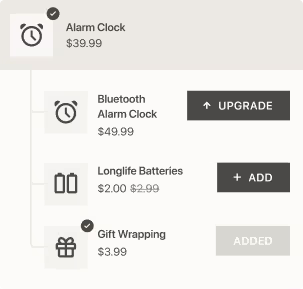Customer acquisition is one of the biggest challenges for e-commerce businesses. The data from 2014 indicates that it can be up to 25 times more expensive to get a new customer than to engage with an existing one, while more recent studies show that acquisition costs increased by 60% from 2014 to 2019 (and they continue to grow up until now).
This never-ending rise in acquisition costs shows the value of retaining existing customers. It’s easier to sell to those shoppers you’ve already made a connection with; plus, it’s more probable that they will buy more frequently and choose more expensive items. Essentially, this will translate into higher AOV and CTLV, e-commerce metrics you should focus on.
With that said, the right welcome messages for new customers can help you instantly maintain their interest and drive more repeat purchases. In this post, we’ll go through the types of welcome emails to new customers that you can use.
How to make new customers return to your store
Welcome letters to new customers have an average open rate of over 46%, which is higher than most other types of e-commerce emails people get. By sending out the sequence of welcome emails, you’ll have plenty of opportunities to bring new customers back to your store. Let’s explore the most common strategies for crafting emails for new customers.
1. Thank new customers for the order and share order tracking information
First and foremost, customers should get order tracking details after they complete their order. You can redirect them to the shipping provider page or create an order lookup page on your own website. The latter is the opportunity to quickly reengage with new customers and provide them with additional value—for example, cross-selling recommendations.
Here’s a sample welcome letter to a new customer:
Subject line: Thank you for your order! Check your tracking details
Hi [customer name],
Thank you for choosing our store. We hope you are excited to receive your order and that it meets your expectations.
To track the status of your order, please visit [order tracking page] and enter your tracking number [tracking number].
In the meantime, you can check out our blog [link to the blog] for inspiration. And if you have any questions, feel free to contact us by replying to this email or via a live chat [link to the chat on the website].
Sincerely,
[customer support member’s name]
Also, send emails for every shipping update: when the order is out for delivery and when it’s delivered.
2. Anticipate possible questions
Think one step ahead and provide customers with the information they might need in the future. Most of it will depend on the type of product: for instance, pet stores can share video tutorials for using pet toys and ammunition, electronics stores can offer instructions on device maintenance, and fashion stores can interest customers in styling recommendations.
Besides that, you can inform new customers about your returns policy, loyalty program, or anything else that makes sense to your business.
There’s no need to create a separate email just for this purpose so you can use the following template together with some other information (order tracking, discount on the next order, etc.).
Hi [customer name],
Thank you for choosing [store name]. We hope you're enjoying your new [name / type of product].
If you have any questions or concerns, our customer service team is always here to help. You can reply to this email or reach out to us via a live chat [link to the chat on the website].
We also have a FAQ section [link to the FAQ page] with the most popular questions and a YouTube channel [link to the channel] with care instructions and other content. We hope you find it helpful!
Sincerely,
[customer support member’s name]
3. Offer a discount for the next order
The easiest way to turn a new customer into a returning one is to offer a discount. Make it limited in time and add links to your most popular products in the email.

Here’s a template for such an email:
Subject line: Grab your 20% discount on the next order
Hi [customer name],
We hope you’re enjoying your new [product name / type].
We’ll be happy to see you back—enjoy this 20% discount on your next purchase.
Use the code [code] during checkout.
The offer is valid until [date].
[product images with links to product pages of the best-sellers or items relevant to the previous purchase]
Sincerely,
[customer support member’s name]
💡 If you offer subscriptions on your store, welcome emails to new customers are a chance to promote them. Explain how people can save on them or how they can personalize them (if applicable to your business).

4. Ask for a product review
The majority of customers rely on product reviews so you should set up a flow of asking for feedback. It should be in place with every order, but with new customers, you can add an extra insensitive to it such as a gift or discount for the next purchase.
Here’s a template for such an email:
Subject line: How was your order? Leave a review and get a gift
Hi [customer name],
We hope you had a wonderful experience with [store name].
If you have a few words to say about the purchased products, leave a review—and we’ll present you with a $20 gift coupon for your next order.
[list of purchased items or their images with links to their review widgets]
You can also tag us on Instagram and TikTok when sharing your content with our products. Nothing makes us happier than seeing our customers enjoying [store name] products :)
[links to social media]
Sincerely,
[customer support member’s name]
💡 There are plenty of Shopify apps for collecting reviews and designing the way they are displayed on your store.
5. Explain the benefits of your loyalty program and encourage referrals
To nurture loyal customers and improve retention, you can craft a loyalty program. It will add some fun to the shopping process and boost the motivation to return to your store. You can also encourage referrals, either separately or as a part of your loyalty program.

Here’s a new customer welcome email template that invites shoppers to a loyalty program:
Subject line: Welcome to [store name] loyalty program
Hi [customer name],
Thanks for choosing our store. We have a loyalty program where you will earn points with every purchase that can be redeemed for discounts on future orders.
You don’t need to do anything to join our loyalty program—you’re already in! To check how many points you have and how to earn more, simply log in to your account [link to the log-in page] using these temporary credentials [temporary password].
We hope to see you back at our store soon.
Sincerely,
[customer support member’s name]
💡 For more new customer welcome letter samples, check out the collection of the best ones on Really Good Emails for inspiration.
5 tips for successful welcome emails to new customers
- Create a logical sequence of welcome letters for new customers. Instead of sending a single email or several random ones, design a series of emails according to the order fulfillment flow and particular perks you want to highlight. For instance, stores that sell physical equipment or digital tools might include a separate email that includes guides and tutorials to help customers get the most out of the products they’ve purchased. Or, stores with a unique mission might send several emails dedicated not to products but to the community they’re building, social causes they’re supporting, etc.
- Provide value. While offering discounts and explaining the perks of joining the loyalty program is great, nothing says customer care better than helpful, valuable content. For example, if you have a blog with posts related to your industry and product usage, you can add links to it to emails and feature particular articles.

- Add a clear CTA. As a rule of thumb, a CTA button should always be distinctly visible, while aligning with the style of the whole thing, be it a web page, social media ad, or email. Look at the following example: even though it’s visually rich, it doesn’t look overloaded and the CTA is a clear center of attention.

- Use images and gifs. Visuals can make your email more engaging. Design your email layouts with custom images and feature your product photos wherever possible (in the recommendation block, for example). You can also add gifs either by simply combining several product pictures or by animating an illustration. Studies show that emails with animated gifs get higher transaction-to-click rates in 72% of cases.
- Automate your emails. To grow an e-commerce business, you can’t do without automation. With an array of email tools available to you, this should be a piece of cake. For instance, you can use Klaviyo that provides you with instructions on how to set up a new customer welcome letter series.
If you’re using a customer segmentation app like Loyal, you’ll automatically have new customers assigned a respective tag in your Shopify admin. You can import this group into any email tool to automate your email campaigns in a few clicks.
New to customer segmentation? You can try Loyal for free for 30 days and explore how 6 automatically created segments can help you personalize your communication with customers. Those 6 segments are created based on the RFM model, which means that the app takes into account the recency, frequency, and monetary value of purchases.


![How to engage with new customers [+ welcome email templates]](https://cdn.prod.website-files.com/601411ff11c3efbd2603b7c9/63dd4c7d11f0f35035fe55a9_main-min%20cropped-min.png)














